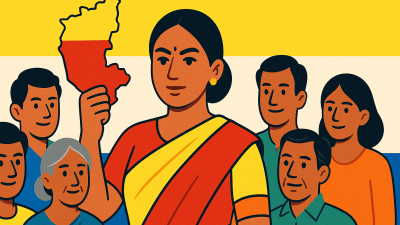In recent years, India has been grappling with a significant job crisis, with unemployment rates reaching a staggering 9.2% in 2022. This alarming statistic is a stark reminder of the challenges facing the Indian economy and its workforce. The situation is particularly dire for the youth, with the unemployment rate among those aged 15-24 reaching 23.2% in the same year.
India’s Job Crisis: Unemployment Hits 9.2%
The Causes of the Job Crisis
Several factors contribute to India’s job crisis. One of the main causes is the mismatch between the skills of the workforce and the demands of the job market. Many young people in India lack the necessary skills and qualifications for the jobs that are available, leading to a high level of youth unemployment.
Another factor is the slow pace of economic growth in India. While the country has experienced significant economic growth in recent years, it has not been enough to create the number of jobs needed to absorb the growing population of job seekers.
The COVID-19 pandemic has further exacerbated the situation, with many businesses closing down or reducing their workforce.
Unemployment in India Statewise:
Haryana has the highest unemployment rate among Indian states, with a rate of 37.4% as of December 2022. This is significantly higher than the national average and the rates in other states.

The Impact of the Job Crisis
The job crisis has far-reaching consequences for the Indian economy and society. High unemployment rates can lead to social unrest, as people struggle to make ends meet and provide for their families. It can also lead to a loss of human capital, as skilled workers may leave the country in search of better opportunities elsewhere.
The job crisis also has a significant impact on the country’s economic growth. When a large number of people are unemployed, it reduces consumer spending, which in turn slows down economic growth. It also leads to a loss of tax revenue for the government, which can make it more difficult to fund essential public services.
Haryana has the highest unemployment rate among Indian states, with a rate of 37.4% as of December 2022. This is significantly higher than the national average and the rates in other states.
Government Initiatives to Address the Job Crisis
The Indian government has launched several initiatives to address the job crisis. One of the most significant is the Skill India program, which aims to provide training and skill development to millions of young people in the country. The program focuses on providing training in sectors where there is a high demand for skilled workers, such as construction, healthcare, and information technology.
The government has also launched the Make in India initiative, which aims to boost the manufacturing sector in the country. This initiative is designed to create more jobs in the manufacturing sector and to attract foreign investment.
Congress leader Supriya Shrinate says “When the elections came, it seemed that there would be talk about unemployment, but the country’s Prime Minister has once again picked up the same script that he has been reading for the past 10 years”
The Way Forward
While the government’s initiatives are a step in the right direction, more needs to be done to address the job crisis in India. The country needs to focus on creating a more favorable business environment, which would encourage more companies to invest and create jobs. It also needs to invest in education and skill development to ensure that the workforce is equipped with the skills needed for the jobs of the future.
In conclusion, India’s job crisis is a complex issue that requires a multi-faceted approach to address. While the government’s initiatives are a good start, more needs to be done to create a sustainable solution to the problem. The country needs to focus on creating a more favorable business environment, investing in education and skill development, and promoting innovation and entrepreneurship. Only then can it hope to overcome the job crisis and create a brighter future for its citizens



